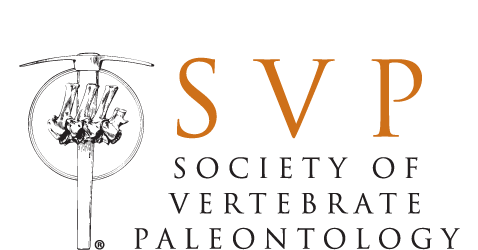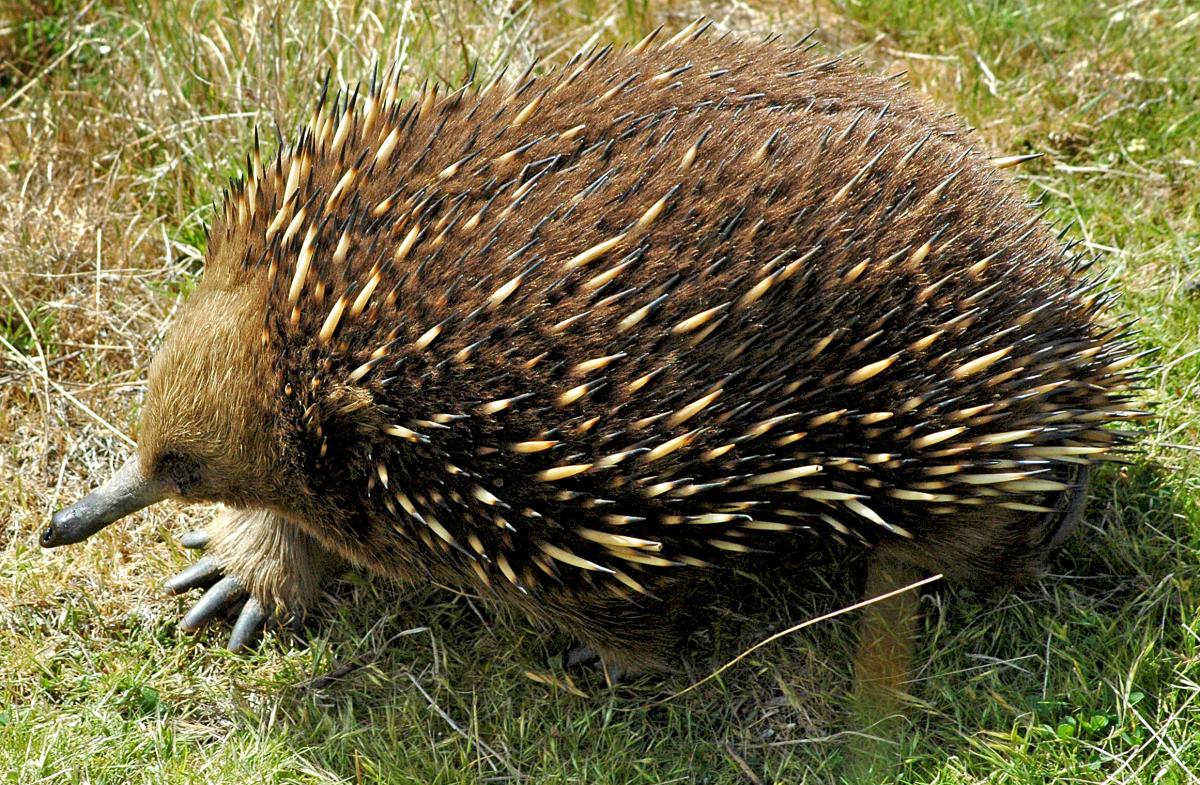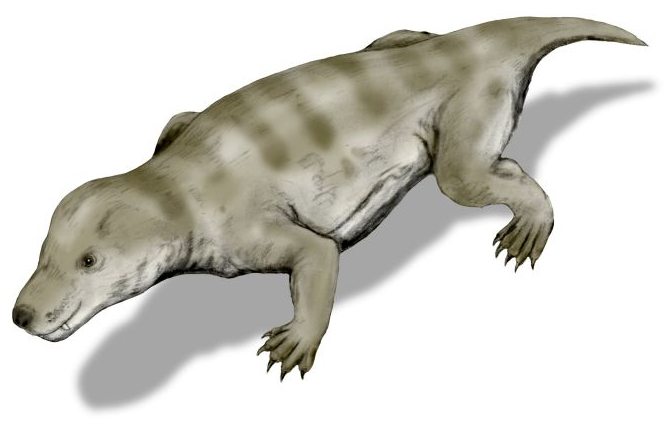The vertebrate paleontologist is a peculiar creature—half geologist, half biologist, half lunatic, it spends as much time as it can in the hottest desert or the coldest tundra, all in the passionate pursuit of the interesting inedible. As many of you know personally, and others of you have no doubt inferred, they’re even more peculiar en masse. One of the things I miss most since leaving academia is attending the annual Society of Vertebrate Paleontology (SVP) meeting. Apart from the fact that it’s among the booziest meetings around, SVP-ers are just … goofy and delightful.
I'll say it again: there is no nerd like a paleo nerd. https://t.co/bM05G8IbCl
— Stephanie Keep (@keeps3) October 16, 2015
 In October, I followed along vicariously on Twitter as the group gathered in Dallas. At the meeting, Jim Hopson was awarded the society’s highest honor, the Romer-Simpson prize, which is granted in recognition of sustained and outstanding scholarly excellence in the discipline of vertebrate paleontology. When I was an undergraduate at Wellesley College, my advisor, Emily Buchholz, encouraged me to contact Hopson, a professor at the University of Chicago, to see if he was still taking graduate students. Unfortunately for me, he wasn’t (he retired that year in that way passionate academics do—by adding “Emeritus” to their title and continuing right on with their research), but I enjoyed exchanging e-mails with him then and was delighted now to have an excuse to contact him again and offer my congratulations.
In October, I followed along vicariously on Twitter as the group gathered in Dallas. At the meeting, Jim Hopson was awarded the society’s highest honor, the Romer-Simpson prize, which is granted in recognition of sustained and outstanding scholarly excellence in the discipline of vertebrate paleontology. When I was an undergraduate at Wellesley College, my advisor, Emily Buchholz, encouraged me to contact Hopson, a professor at the University of Chicago, to see if he was still taking graduate students. Unfortunately for me, he wasn’t (he retired that year in that way passionate academics do—by adding “Emeritus” to their title and continuing right on with their research), but I enjoyed exchanging e-mails with him then and was delighted now to have an excuse to contact him again and offer my congratulations.
The following is an extracted Q&A taken from our e-mails and edited for clarity.
SK: Congratulations on the Romer-Simpson Prize! Can you tell me what it means to you?
JH: I feel extraordinarily honored to be recognized by my professional society, the Society of Vertebrate Paleontology, for lifetime achievement in the field to which I have devoted my research career. In addition, Alfred Sherwood Romer and George Gaylord Simpson, for whom the Romer-Simpson Medal was named, were the two greatest vertebrate paleontologists of the twentieth century and my intellectual heroes, so the award has that much more significance to me.
SK: How did you come to be a paleontologist? Was it love at first sight, or a more meandering path?
JH: It was a combination of the two. I was drawn to wild animals from an early age and tried to learn all I could about them. Because I grew up in New Haven, Connecticut, I went every year on school trips to Yale’s Peabody Museum of Natural History, where the docents walked us through the exhibits and told us interesting things about the “stuffed” animals and mounted fossil skeletons. I showed such interest that the head docent lent me books on fossils and earth history. This sparked my permanent interest in fossils.
However, coming from a working-class background, I had no knowledge of the wider intellectual world in which one could be a professional scientist. So, because I loved animals, I decided I would become a veterinarian, the only profession, except for zookeeper, that I thought would allow me to work with animals.
SK: Me too! Well, in reverse. The idea of being responsible for other people’s pets frightened me, so I thought I’d be a zookeeper.
JH: I think this is pretty common. Most children interested in animals probably don’t think paleontologist, or for that matter, scientist, right away! I decided to apply to Yale, figuring I could gain the background for getting into vet school while conveniently living at home. I was accepted and received a scholarship, so I entered Yale, scarcely understanding the extraordinary opportunity being offered me.
An introductory geology course in my second year inspired me to major in geology and to combine it with my youthful interest in vertebrate fossils. I was put into contact with the paleontologist at Peabody Museum, Joseph T. Gregory, who became my mentor. I took his courses and worked for him at the museum as a bursary student, identifying and cataloguing specimens and getting to know the vertebrate fossil collection. From Yale, I went to the University of Chicago for my doctoral degree. Despite my early naiveté about how to pursue an interest in fossils, I was lucky enough to be in the right place to enter a top-rated university where I gained the knowledge that led me to a successful and fulfilling career doing the thing I always wanted from childhood.
SK: And you became a faculty member at Chicago! You might not have had to deal with this too much over your long career at a top university, but you’re no doubt aware that a huge slice of the American public does not accept evolution. I’ve always felt that paleontologists are sort of the “keepers” of evolution. Do you agree? Is there a special role for paleontologists in the fight to increase the public’s acceptance of evolution?
JH: I think paleontologists have a special role in promoting understanding of evolution because they deal with fossils, the actual products of evolutionary change, over vast periods of time that are precisely calibrated by the “clock” of radioactive decay. As a result, there is no mistaking the significance of evolutionarily and temporally intermediate fossils between older ancestral species and extremely modified descendent species. Archaeopteryx, with its feathered wings, but also teeth and clawed fingers, is as striking an evolutionary intermediate between a dinosaurian ancestor and an avian descendant as one could wish. The same can be said for the “fishapod” Tiktaalik, a fish with an internal skeleton in its paired fins that has the same pattern of bones as the limb skeleton of a land-living tetrapod.
Among the most spectacular evolutionary intermediates we now have are fossils of ancestral land-living whales with four legs and a whole descendent series of aquatic whales that document the evolution of forelimbs into flippers coupled with a gradual reduction of their hind limbs.
 SK: Oh, whales, I love whales. And I agree that their fossil record is very convincing evidence for evolution—of course! But it’s not as visceral, to me, as when I look at a giant flightless bird, like a cassowary or ostrich. Every time I see one, I think to myself: anyone who doubts evolution in general, or that birds evolved from a group of dinosaurs in particular, clearly has never seen these birds. Are there any fossil or extant organisms you feel that way about?
SK: Oh, whales, I love whales. And I agree that their fossil record is very convincing evidence for evolution—of course! But it’s not as visceral, to me, as when I look at a giant flightless bird, like a cassowary or ostrich. Every time I see one, I think to myself: anyone who doubts evolution in general, or that birds evolved from a group of dinosaurs in particular, clearly has never seen these birds. Are there any fossil or extant organisms you feel that way about?
JH: I feel that way about the living monotremes (platypus and echidnas) of Australia. They are reptile-like in laying eggs rather than having live birth and their skeletons retain reptilian-like shoulder girdles and forelimbs, causing them to retain a sprawling type of locomotion that has been abandoned by all other mammals. Yet monotremes have fur and feed the young on milk, though they are primitive in lacking nipples, so that the young suck the oozing milk off mama’s belly hairs.
retain reptilian-like shoulder girdles and forelimbs, causing them to retain a sprawling type of locomotion that has been abandoned by all other mammals. Yet monotremes have fur and feed the young on milk, though they are primitive in lacking nipples, so that the young suck the oozing milk off mama’s belly hairs.
SK: They’re pretty darn cute, too. So do you think that flightless birds and adorable monotremes are the answer, or is there something else that would most effectively “move the needle” on evolution acceptance?
JH: I believe that education is the only way to increase acceptance of the scientific view of how the natural world came to be. This includes teaching what science is and how scientific ideas are developed and incorporated into a well-supported theory of how the world evolved over time. Teaching how Earth history is read from the rocks and how patterns of change in living things are explained by Darwin’s theory of natural selection provides students with a coherent, evidence-based explanation of the natural world. Social and religious pressures will prevent some students from completely accepting this view, but this should not weaken our commitment to see that the majority of students are exposed to the scientific explanation.
SK: As you know, Emily Buchholtz had a tremendous influence on me in terms of my education and career. Was there a teacher or educator that influenced you?
JH: There are too many to name. I learned the basics of vertebrate paleontology from Joe Gregory at Yale and how to use fossils to develop insights into evolutionary patterns from Everett Olson and Ralph Johnson at the University of Chicago. Even when I was a faculty member at the latter institution, I learned the art of teaching from my co-teacher in chordate biology, Eric Lombard, who is probably the best teacher I’ve ever known.
SK: Do you ever get young students asking you for tips on how to become a paleontologist? What do you tell them?
JH: I tell them to get a broad biological background because paleontology is now primarily a biological science. Some knowledge of geology is important, of course, but the major advances in paleontology are being made in the context of biology. They need to know the anatomy of fossils extremely well, but they also need to know genetics, development, behavior, ecology, and other areas that help us to interpret the fossils. If they get the opportunity to go into the field to collect fossils, they should take it! New fossils are the lifeblood of paleontology!
SK: What has been the most surprising discovery—yours or others’—in paleontology over the last fifty years?
JH: This is an easy one. Feathered dinosaurs! This discovery settled once and for all the big question: What were the ancestors of birds?
 SK: A colleague asked, during a recent paleontology Q&A in Twitter, what unknowable thing do you hope will become knowable via paleontology? He was thinking of recent discoveries in dinosaur coloration—that was previously unknowable, but no longer!
SK: A colleague asked, during a recent paleontology Q&A in Twitter, what unknowable thing do you hope will become knowable via paleontology? He was thinking of recent discoveries in dinosaur coloration—that was previously unknowable, but no longer!
JH: I am very interested in the origin of endothermy in mammals, so I would love to know whether non-mammalian therapsids had hair, which would suggest a significant level of endothermy in these so-called “mammal-like reptiles.” Such fossils should turn up some day!

